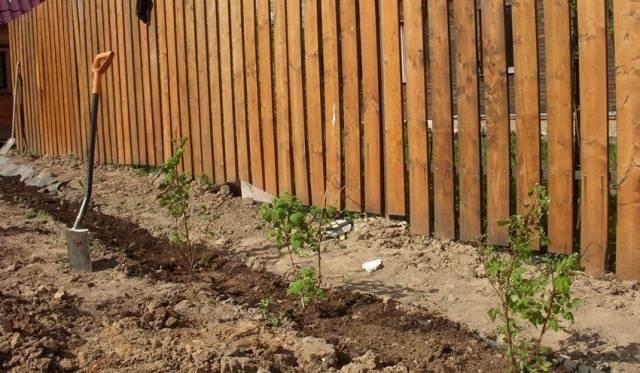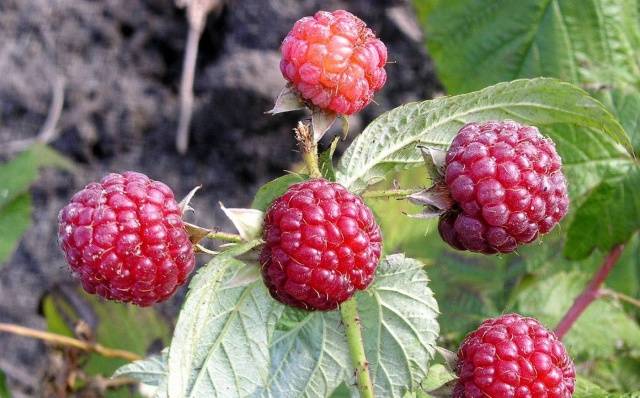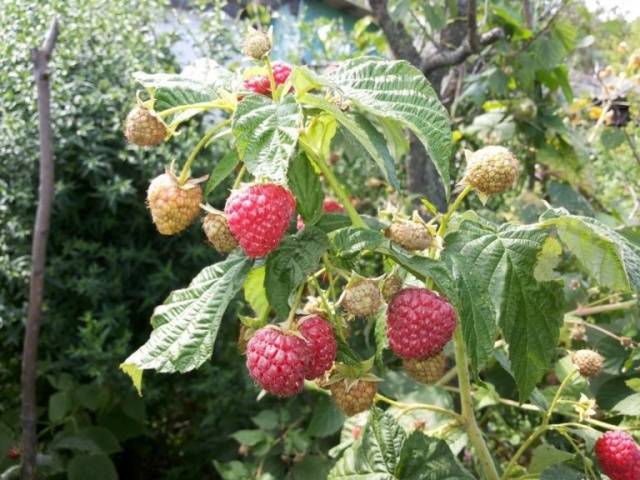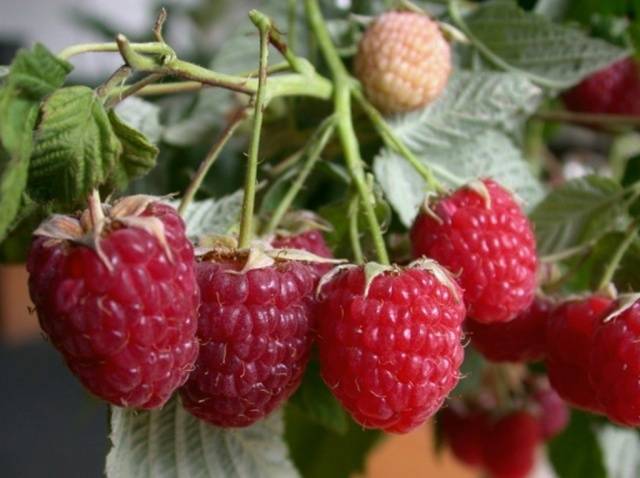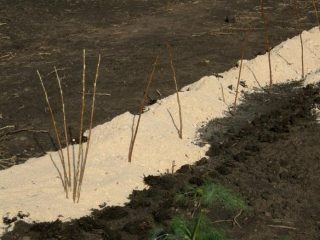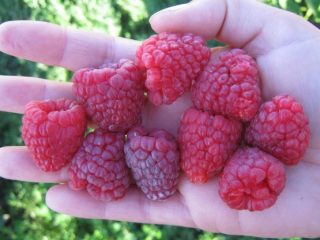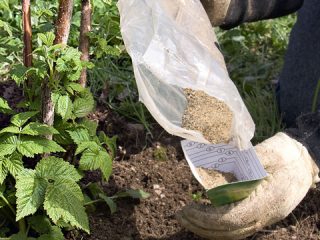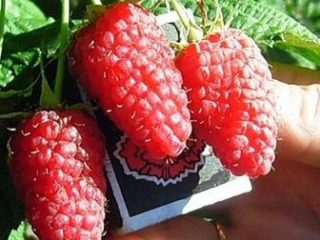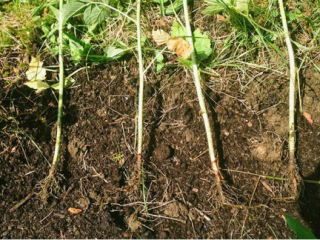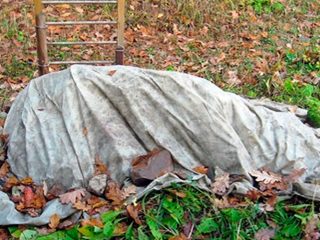Content
Raspberry Autumn Beauty is a remontant variety that produces a late harvest. The bushes are compact in size. A proven and reliable variety with high yields. Resistance to diseases is average; plants are treated with special preparations against pests.
Characteristics of the variety
Description of the raspberry variety Autumn Beauty:
- remontant variety;
- plant height from 1 to 1.5 m;
- compact or slightly spreading bush;
- shoots of medium thickness;
- a large number of shoots;
- long fruiting branches.
According to the description and photo, the berries of the Autumn Beauty raspberry variety have their own characteristics:
- oblong shape;
- ruby color;
- weight 4-6 g;
- large sizes;
- easily removed from the bush;
- sweet taste;
- pronounced aroma.
The raspberry variety Autumn Beauty ripens at the end of August. In warm regions, the first berries are picked from the last ten days of July. Peak fruiting occurs in mid-September. The berries ripen at the same time.
The yield of the variety is from 5 to 7 kg of fruits per bush. Often the berries do not have time to ripen on the shoots until the end of the season. In the fall, you can cut off branches with unripe fruits and leave them indoors to ripen.
The berries of the variety have universal use.They are used fresh, frozen for the winter, and processed into preserves, jams, and compotes. Raspberries do not tolerate transportation well, so it is recommended to use them immediately after picking.
Planting raspberries
The Autumn Beauty variety is planted on a prepared plot, taking into account crop rotation. The culture prefers illuminated areas with fertile soil. Seedlings are purchased from nurseries or obtained from a mother bush.
Preparatory stage
Remontant raspberries prefer light soils rich in nutrients. The permissible groundwater level is no higher than 1 m. The site should not be exposed to wind loads.
Raspberries are especially demanding when it comes to lighting. In the shade, the yield of the variety decreases, the ripening time of the berries shifts, and their taste deteriorates.
Autumn beauty raspberries are planted in loamy soil. Limestone or dolomite is added to acidic soil. It is first recommended to grow lupine, mustard or other green manure on the site. After potatoes, peppers and tomatoes, planting is not carried out.
Planting material is purchased at specialized centers or obtained independently. For planting, a healthy seedling with a length of 25 cm and a stem thickness of 5 cm is suitable.
If there is a mother bush, you need to select root shoots up to 10 cm high. The shoots are dug up and transplanted into a greenhouse. After rooting, the raspberries are ready to be moved to a permanent location.
Work order
Planting of the Autumn Beauty variety begins in the fall or spring. The soil is dug up and cleared of weed. For every sq. m add 2 buckets of humus, 1 glass of potassium sulfate and superphosphate.
Sequence of actions when planting raspberries:
- Dig a hole measuring 40x40 cm and 50 cm deep. Leave 70 cm between plants. When organizing several rows, maintain a distance of 1.5 m.
- Place the root system of the raspberry seedling in a solution of a growth stimulator for a day.
- Lower the prepared plant into the planting hole and cover it with soil. The location of the root collar is level with the ground surface.
- Water the plant thoroughly.
After planting raspberries, keep the soil moist. Plants are watered when the soil begins to dry out. Mulching with peat or humus will help prevent the soil from drying out.
Variety care
According to the description, the Autumn Beauty raspberry variety is classified as remontant, and therefore requires constant care. High yields are ensured by regular watering, fertilizing and pruning shoots. To protect against diseases and pests, folk remedies or biological products are used.
The variety is frost-resistant and tolerates winter well under snow cover. In the absence of snow, raspberries need to be covered with humus and spruce branches.
Watering
Raspberries are watered weekly, in drought - up to 3 times a week. With a lack of moisture, plants begin to dry out, and the number of ovaries decreases.
Stagnant moisture is also detrimental to raspberries. If there is excessive moisture, the roots do not have access to oxygen, plant development slows down, and signs of disease begin to appear.
When watering, the soil should be wet to a depth of 30 cm. For plants, moisture is especially important during the flowering and fruiting period. For large plantings, drip irrigation is installed to ensure a uniform supply of moisture.In the fall, the last abundant watering is carried out to help the raspberries survive the winter.
Feeding
When applying fertilizers when preparing the soil, Autumn Beauty raspberries begin to be fed only 3 years after planting. In the future, fertilizers are used annually.
Before flowering, raspberries are fed with mullein infusion in a ratio of 1:10. Fertilizer saturates plants with nitrogen and promotes the development of new shoots. During the growing season, nitrogen components are abandoned in favor of potassium and phosphorus.
Options for feeding raspberries:
- 50 g of nitroammophoska per 1 sq. m.;
- 30 g of superphosphate and 15 g of potassium sulfate;
- 200 g dry wood ash.
Substances are embedded in the ground or diluted in 10 liters of water. During the season, the Autumn Beauty variety is fed 2-3 times. Between treatments take a break of 2-3 weeks.
In cold weather, watering is replaced by spraying raspberries. The concentration of substances is reduced by 2 times. When treated with leaves, plants absorb nutrients better.
Trimming
After the end of fruiting, the Autumn Beauty variety is cut out at the root. Next year, the raspberries will have new shoots that will bring a high yield.
If autumn pruning is not carried out, then in the spring it is necessary to eliminate dry and frozen shoots. The top of the bush is left; if you shorten it, the development of the raspberries will slow down. If part of the shoot has dried out, it is cut back to a healthy bud.
In summer, root shoots are removed, which can be used to propagate the variety. For 1 sq. m leave no more than 10 shoots.
Diseases and pests
Remontant raspberries are characterized by increased resistance to diseases. With increased humidity, plants may show signs of fungal infections: anthracnose, verticillium, spotting.
To combat diseases, the drugs Topaz, Oxiom or Fitosporin are used. Preventive treatments are carried out during the raspberry flowering period. Disinfecting garden tools, rationing watering, and weeding will help protect plantings from diseases.
Raspberry pests include mites, beetles, caterpillars, and aphids. To combat insects, folk remedies are effective and have no restrictions on their use. For 10 liters of water take 100 g of chopped garlic or onion. The product is infused for 2 days, after which the raspberry plantings are sprayed.
Wood ash is a universal method of pest control. It is sprayed on plants or added to a spray product. Tobacco dust has similar properties.
Special preparations are recommended to be used before raspberries begin to bloom. Actofit, Iskra, Karbofos are used against insects.
Reviews from gardeners
Conclusion
Raspberry Autumn Beauty is notable for its long and abundant fruiting. Harvest dates depend on weather conditions. Raspberries are planted in lighted areas with fertile soil. The variety requires careful care, including watering, adding nutrients and pruning.

